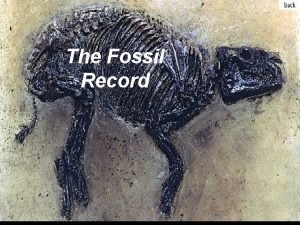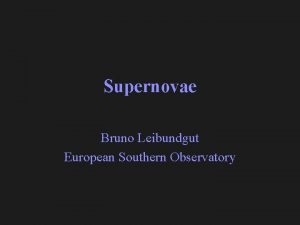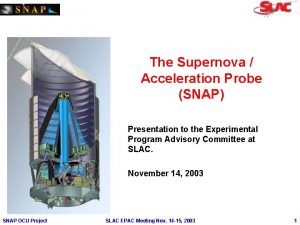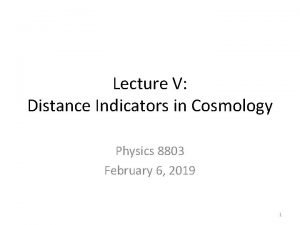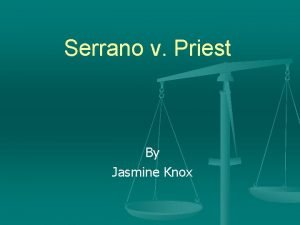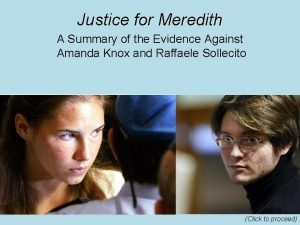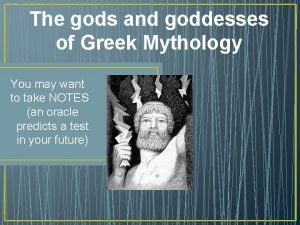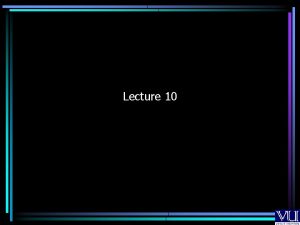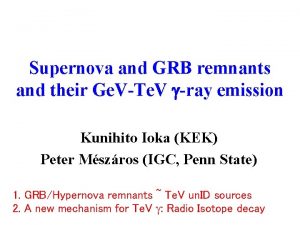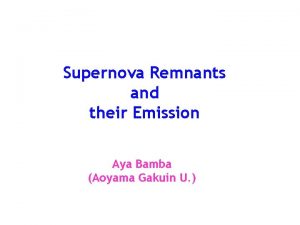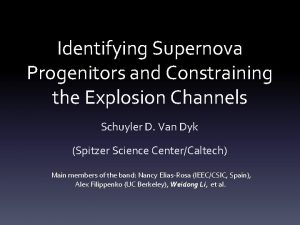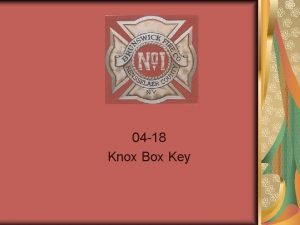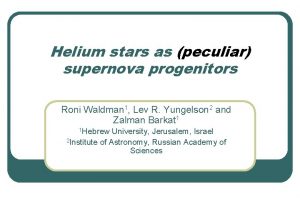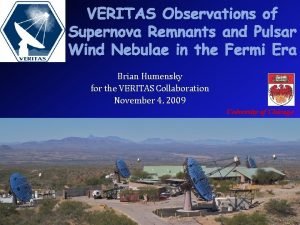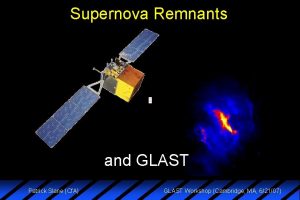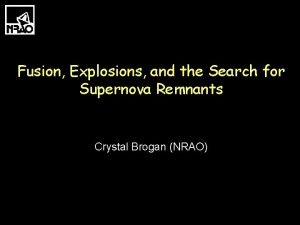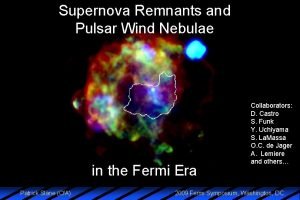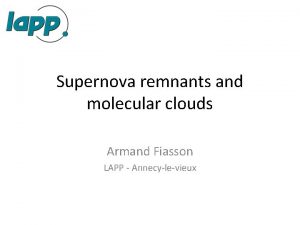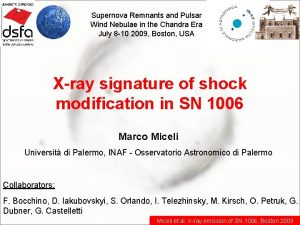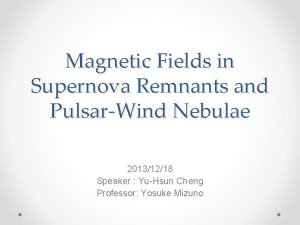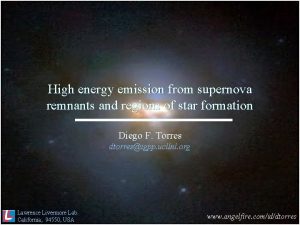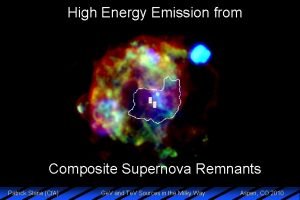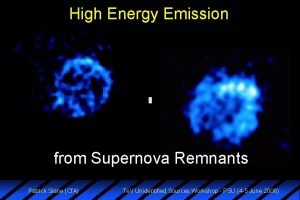Supernova Remnants and their Progenitors Knox S Long




![Identifying SNRs optically H [S II] v • Most SNRs in nearby galaxies are Identifying SNRs optically H [S II] v • Most SNRs in nearby galaxies are](https://slidetodoc.com/presentation_image_h/1587e8289ed6614cbb43c861201fe253/image-5.jpg)


![nd 2 Generation Surveys Underway • In M 83, 100 more high [S II]: nd 2 Generation Surveys Underway • In M 83, 100 more high [S II]:](https://slidetodoc.com/presentation_image_h/1587e8289ed6614cbb43c861201fe253/image-8.jpg)
![New techniques – [Fe II] • In M 83, we have identified about 20 New techniques – [Fe II] • In M 83, we have identified about 20](https://slidetodoc.com/presentation_image_h/1587e8289ed6614cbb43c861201fe253/image-9.jpg)


![Finding SNRs in X-rays X-ray H [S II] v • Extended sources • HII Finding SNRs in X-rays X-ray H [S II] v • Extended sources • HII](https://slidetodoc.com/presentation_image_h/1587e8289ed6614cbb43c861201fe253/image-12.jpg)


















- Slides: 30

Supernova Remnants and their Progenitors Knox S. Long Main Collaborators Bill Blair, Kip Kuntz, Paul Plucinsky, Robert Soria, Frank Winkler

Introduction • SNe are bright but fade typically within a year • M 83 has had 6 SNe in the last 100 years • Estimated ages for observed l. SNRs typically 10, 000 -20, 000 years • Expect 600 -1200 SNRs in M 83 • SNRs provide large samples showing where and in what environments SNe explode

Outline • How to find SNRs in galaxies • Optically • Radio • X-ray • Class properties of these samples • First steps toward using SNRs to learn about likely progenitors

Illustrate with M 33 and M 83 M 33 Ch. ASe. M 33 – 1. 4 Ms Plucinsky+2009; Tuellmann+2011 M 83 New 750 ks Chandra program underway
![Identifying SNRs optically H S II v Most SNRs in nearby galaxies are Identifying SNRs optically H [S II] v • Most SNRs in nearby galaxies are](https://slidetodoc.com/presentation_image_h/1587e8289ed6614cbb43c861201fe253/image-5.jpg)
Identifying SNRs optically H [S II] v • Most SNRs in nearby galaxies are identified from [SII]: Ha ratios: SNRs > 0. 4. HII regions ~ 0. 1 • Photo-ionized gas has most S in SIII • Recombining shocks have a wide range of ionization states • Caveat: the separation between SNRs and H II regions drops with surface brightness • Young core-collapse SNRs may show strong [OII] or [O III] • Oxygen is the dominant coolant in the ejecta of core-collapse SNe • Caveat: PNe are also bright O-dominated emission nebulae

The Optical Emission of Ia SNRs SNR 0509 -69. 5 • Most Ia SNRs, including SN 1006 and Tycho emit only in the Balmer lines • Emission arises as neutral H is ionized behind the shock

First Generation Surveys • First generation surveys – 25 -100 SNRs in ~10 galaxies • First search of M 83 using the Dupont 100 inch in late 90 s • 74 nebulae with elevated [SII] : Ha • Most confirmed with spectroscopy Blair+ 2004
![nd 2 Generation Surveys Underway In M 83 100 more high S II nd 2 Generation Surveys Underway • In M 83, 100 more high [S II]:](https://slidetodoc.com/presentation_image_h/1587e8289ed6614cbb43c861201fe253/image-8.jpg)
nd 2 Generation Surveys Underway • In M 83, 100 more high [S II]: H ratio nebulae SNRs • 73 compact [O III] candidates 33 likely SNRs • L[O III] > Lmax (PN), or • coincident with X-ray sources Winkler+2011
![New techniques Fe II In M 83 we have identified about 20 New techniques – [Fe II] • In M 83, we have identified about 20](https://slidetodoc.com/presentation_image_h/1587e8289ed6614cbb43c861201fe253/image-9.jpg)
New techniques – [Fe II] • In M 83, we have identified about 20 SNRs in [Fe II] • Some show strong [S II], others do not Blair+2011

Finding SNRs from radio observations • SNRs are extended, non-thermal sources • Steep spectral indexes compared to HII regions • Nearly all Galactic SNRs first discovered as radio sources • Unfortunately, most radio surveys for SNRs too insensitive to date • Will change with EVLA

M 33 & M 83 SNR Radio IDs In M 33, Gordon+1999 found • Of 97 optically identified sources, 53 radio sources coincidences In M 83, Maddox+06 found • 4 historical SNe • 3 non-thermal radio sources coincident with optical SNRs
![Finding SNRs in Xrays Xray H S II v Extended sources HII Finding SNRs in X-rays X-ray H [S II] v • Extended sources • HII](https://slidetodoc.com/presentation_image_h/1587e8289ed6614cbb43c861201fe253/image-12.jpg)
Finding SNRs in X-rays X-ray H [S II] v • Extended sources • HII regions are typically much fainter in X-rays • Most SNRs are hot thermal plasmas • Spectra are soft compared to compact binaries (and background AGN) • Can be confused with supersoft sources or foreground stars

Chandra image of M 33’s southern spiral arm with known SNRs Long+2010

Bright Chandra SNRs in M 33

X-ray typing of Progenitor • For young SNRs, • X-ray spectra of CC SNRs separable from Ia’s (Hughes, Badenes) • Greater asymmetry may also favor CC SNR (Lopez+2009)

Bright SNRs in M 33 • 7 SNRs with enough counts for spectral analysis • M 33 SNR 21 is ISMdominated expanding into dense molecular cloud (Gaetz et al 2007) • M 33 SNR 31 has a spectrum resembling the core-collapse object E 0102 in the SMC

SNRs have soft X-ray spectra M 33 M 83 S=0. 35 -1. 2 ke. V, M=1. 2 -2. 6 ke. V; Total=0. 35 -8 ke. V

The SNR samples today M 33 M 83 • Samples reflect fact that optical imagery is still more sensitive • Some objects are now being discovered first though with X-rays • With EVLA, radio-identification should become possible

M 33 SNRs - Results • 82 of 137 SNRs > 2 • 61 (of 96) GKL SNRs • 21 other SNR candidates also detected • Chance probability low

M 33: Mostly Middle-Aged SNRs • Median diameters • All= 44 pc • Detected = 38 (32) pc; • Undetected = 54 pc Sample, >2 , >3

Simple Interpretation Just the Facts • Middle age SNRs dominate detections (and sample) • Lx at a single diameter is highly variable • Very large objects are always faint • 60%is detected; 40% is not It’s the environment, stupid! • Lx ~ n 2 R 3 • (0. 35 -2 ke. V) • ~ constant for k. T>0. 3 ke. V • drops rapidly for k. T<0. 3 ke. V • T inversely proportional to M • M(Mo) = 83 T(ke. V)-1 E 51 • Implications • Small diameter objects are faint • Large diameter( Rmax ~ n 1/3) are faint • Lx of intermediate diameter objects strongly dependent on density (n 2)

Are X-ray properties correlated with other properties? • Extreme X-ray SNRs are extreme in most respects • High Lx objects tend to be high LH objects • High Lx objects are generally to be radio detected • Converse is often not true • High LH objects often not X-ray detected • High radio flux objects often not X-ray detected

Would your favorite SNR have been detected in M 33? Radio: No objects as bright as Crab; one possible PWN, coincident with slightly extended, non-thermal radio source X-ray: No bright sources (>4 1035 erg s-1) that are thermal except stars or known SNRs At the distance of M 33, we should have detected • Most of the bright SNRs in the Galaxy and Magellanic Clouds • Most historical SNe - the Crab Nebula, Tycho, Cas A, & Kepler

M 83 Historical SNe

Young SNRs are hard to find beyond the Magellanic Clouds • Ia • II • Hard to separate from HII regions, given no [S II] • Faint in X-rays • Tycho & Kepler, but not SN 1006 would have been seen in Ch. ASe. M 33 study of M 33 • Faint in Radio • O-dominated nebulae • Cas A and G 292+1. 8, N 132 d would have been detected in M 33 • 6 historical SNe in M 83; two found

Example - SNR in NGC 4449 • SNR in NGC 4449 is brightest known Xray SNR • SN not seen but 5075 years old Milisavljevic+2008

Example - SNR in NGC 4449 • SNR in NGC 4449 is brightest known Xray SNR • SN not seen but 5075 years old • X-ray spectrum indicates the product of CC SN • Analysis of HST shows within cluster with turnoff mass of 15 -25 M Long+ in prep Milisavljevic+2008

Example – LMC • MC provide test case of whether local stellar populations can be used to learn about progenitors • Badenes+ 2009 used Harris & Zaritsky 2009 SF history of LMC to study local populations around 4 CC and 4 1 a SNRs • Estimated probabilities for CC Ia • progenitor masses for CC SNRs and • prompt or delayed population events Badenes+2009

Ex. – M 83: Mean Progenitor Mass • Dopita+2010 found 60 SNRs in part of M 83 observed with HST • LH SF rate of ~ 2. 8 M yr-1 • Assume Miller & Scalo IMF • Estimate sample complete for objects <104 yr • 42 objects in this subsample M ~ 24+10 -7 M for progenitors Dopita+2010

Summary • Large samples of SNRs are have been and are continuing to be identified • Optical techniques remain the most effective in finding SNRs • With Chandra and XMM many of these SNRs are being detected, and in few cases, new ones are being identified • Radio observations are lagging, but this picture will change with the EVLA • In M 33: • The sample of SNRs brighter than LX ~4 1035 ergs s-1 is complete • X-ray SNRs in M 33 with LX> 2 1034 ergs s-1 now total 82 • Given that many SNRs are near the luminosity limit, a factor of 2 or 3 in sensitivity would likely reveal the rest. • Characterization of the samples is in its infancy • There are large variations of properties at a given size. • Need to understand local environment to extract class properties of SNRs • Typing of SN progenitors are the major issue for the purposes of this conference
 Romeo and juliet act 5 vocabulary
Romeo and juliet act 5 vocabulary Evidence of evolution of remnants and impressions *
Evidence of evolution of remnants and impressions * Bruno leibundgut
Bruno leibundgut Heritage defence infrastructure
Heritage defence infrastructure Supernova acceleration probe
Supernova acceleration probe Supernova
Supernova Supernova spectra
Supernova spectra Foam remnants
Foam remnants Supernova
Supernova Chilomicroni remnants
Chilomicroni remnants Supernova mentor
Supernova mentor Tall + short h
Tall + short h Once upon a time there lived a little country girl
Once upon a time there lived a little country girl Lost sea ranking chart
Lost sea ranking chart Kilby street gang
Kilby street gang Oliver north iran contra affair
Oliver north iran contra affair Serrano vs priest
Serrano vs priest Samsung knox academy
Samsung knox academy Lyndsey knox
Lyndsey knox William knox
William knox Samsung knox academy
Samsung knox academy Justice for meredith
Justice for meredith Canvas knox schools
Canvas knox schools Props in tinikling
Props in tinikling Long long ago when the gods and goddesses
Long long ago when the gods and goddesses Long jump officials and their duties
Long jump officials and their duties Long long ago people used to think that the earth was
Long long ago people used to think that the earth was There was a king story
There was a king story Once upon a time long long ago
Once upon a time long long ago Long long int c
Long long int c Sóc nhí câu đố
Sóc nhí câu đố

